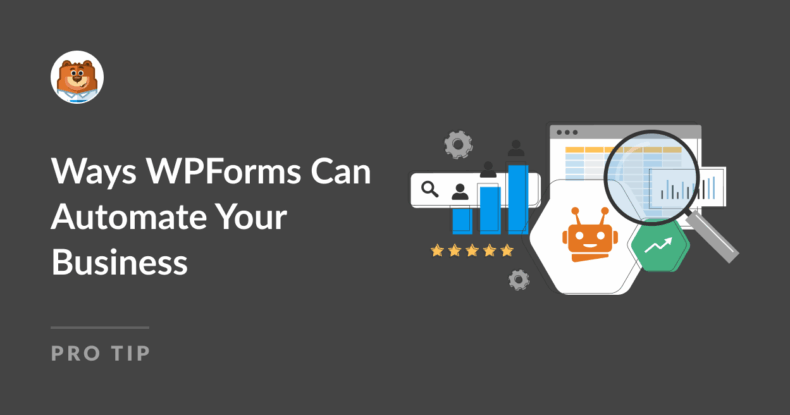AI Summary
If you build it, automation will come… (with WPForms)
Running a business means dealing with a lot of little tasks that add up. Forwarding messages. Copying info into spreadsheets. Sending the same emails over and over. You don’t always realize how much time it eats until you finally stop doing it yourself.
WPForms can help you cut out the manual steps that slow you down. Not with clunky systems or complicated workflows, but with simple form-based automations that do the job quietly in the background.
Want to know how it works? Let’s get to it!
Streamline Your Operations: 5 Ways WPForms Can Automate Your Business
- 1. Instantly Route Form Data to the Right Place
- 2. Send Follow-Ups and Alerts Automatically
- 3. Recover More Leads Every Time
- 4. Turn Your Forms Into Payment Flows
- 5. Keep Your Data Organized From the Start
- FAQ
1. Instantly Route Form Data to the Right Place
When someone fills out a form, that information shouldn’t just sit in your inbox.
With WPForms, you can automatically send form entries to other apps you already use.
That includes CRMs HubSpot and Salesfore, cloud storage like Google Drive or Dropbox, and tools like Slack, Twilio, or your email marketing platform.

It’s a one-time setup. After that, your form does the routing of leads, storing of files, updating of spreadsheets — without you having to touch it.
Create Your Wordpress Form Now
2. Send Follow-Ups and Alerts Automatically
Once a form is submitted, WPForms can trigger specific actions based on what the person filled out.
You can:
- Send a confirmation email to the user
- Alert a team member instantly
- Route requests based on department or category
- Use webhooks to talk to other platforms, no coding required
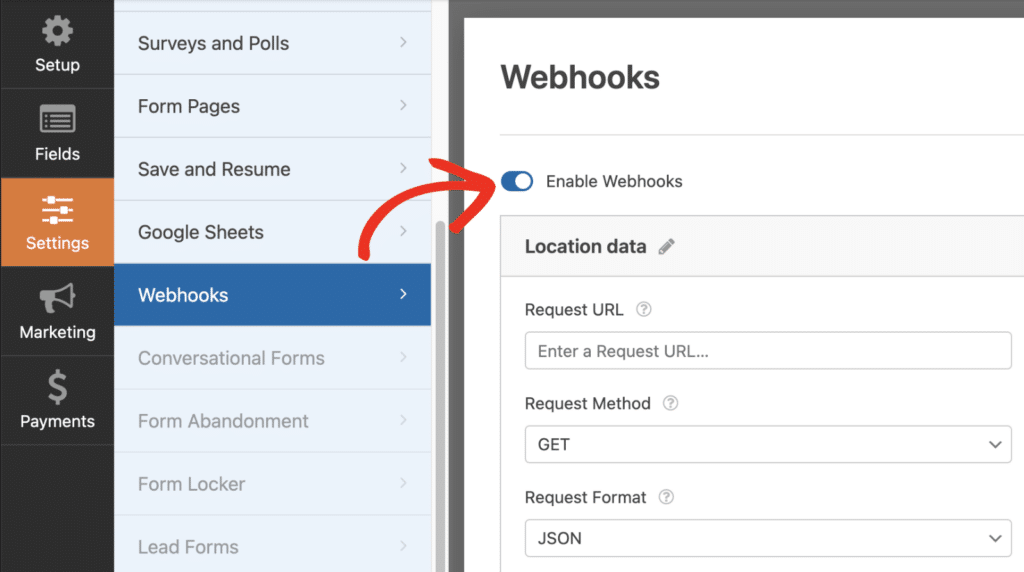
This means you don’t have to always remember who needs to know what. You set the rules once, and WPForms takes care of the handoffs.
3. Recover More Leads Every Time
People start filling out forms and bail all the time. But where most tools lose that data, WPForms doesn’t.
With features like Form Abandonment and entry tracking, you can follow up even when someone doesn’t click “submit.”
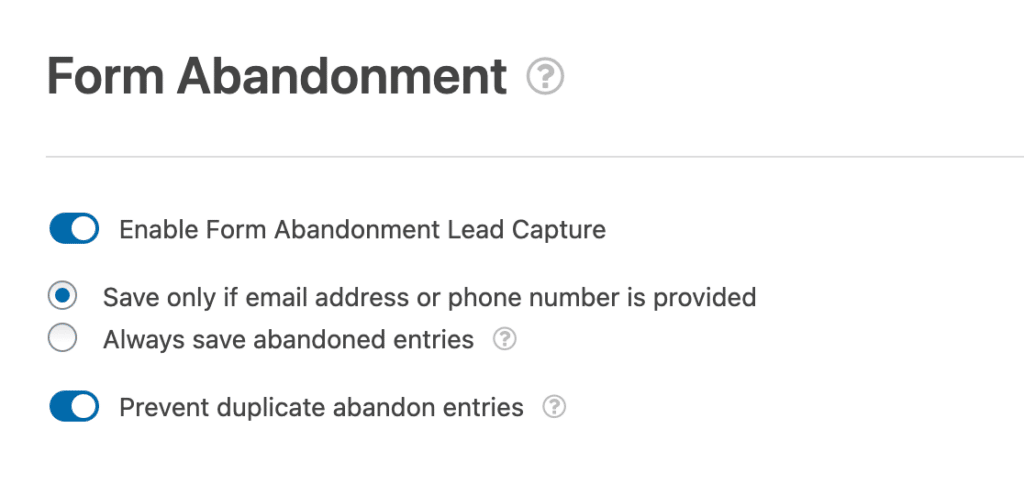
You also get options like single-question “lead forms,” user journey tracking to see where someone came from, and conversational forms that feel less like a form and more like a chat. These details make it easier for users to finish, and easier for you to keep what they started.
4. Turn Your Forms Into Payment Flows
Selling a product? Accepting donations? Processing client invoices? You can set up WPForms to handle that automatically, too.
- Collect payments with Stripe, PayPal, Square, or Authorize.Net
- Apply coupon codes or discounts based on user input
- Calculate totals automatically inside the form
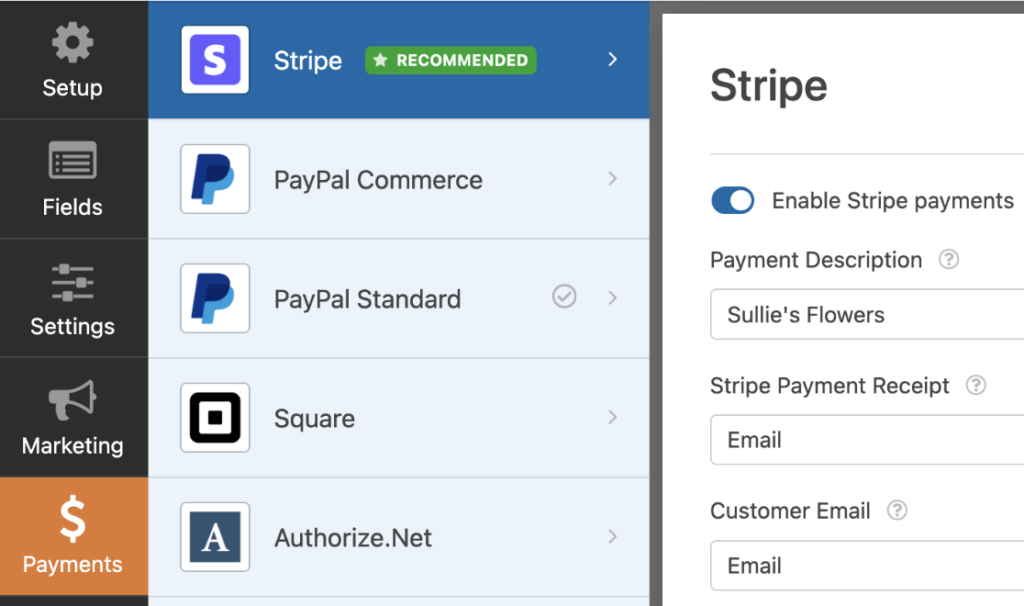
Once submitted, the form can send receipts, notify your team, log the payment, and even send the data straight to your finance tool. No shopping cart needed. And no chasing down payment emails!
5. Keep Your Data Organized From the Start
You don’t need to dig through inbox threads or scattered spreadsheets. WPForms stores all submissions in a central dashboard, with filtering, search, and export tools built in.
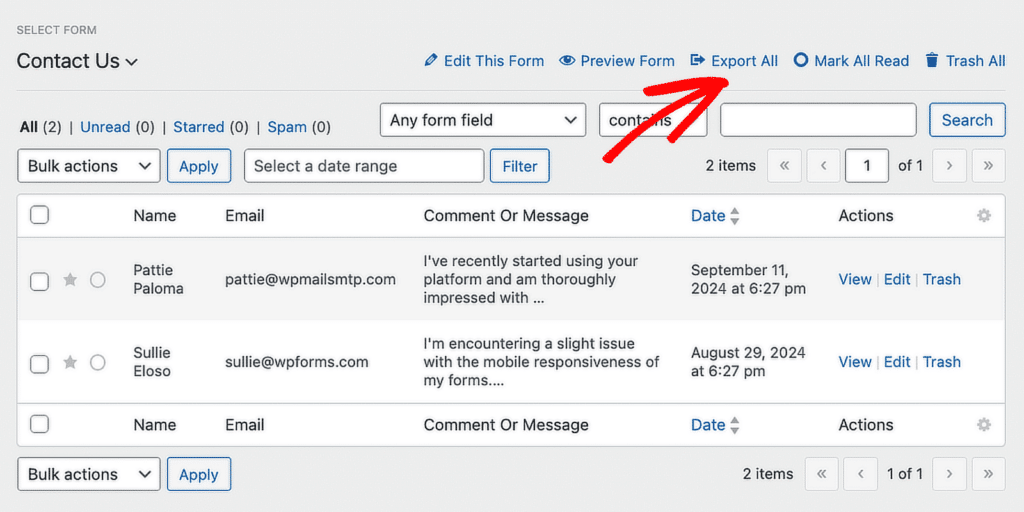
But more importantly, you can push that data wherever you need it to live — a Google Sheet, your Dropbox, a CRM, your email tool… Your forms aren’t just collecting info, they’re putting it in the right place right away.
Build the Form. The Automation Comes With It.
All of this works because the form builder makes it easy to set rules as you go.
Drag in a field, set up a condition, and choose what happens when it’s triggered. Done! You don’t need to write code or connect plugins. All you have to do is just tell the form what to do, and it does it.
So even if you’ve never thought of forms as “automation tools,” they can become exactly that. (As long as they’re built with WPForms!)
Just start small, and fix something that’s slowing you down. Pick one task you’re doing “by hand” right now. Like forwarding a contact form. Copy-pasting client requests. Logging payments. Then try automating it with WPForms, and let me know how it goes.
It doesn’t have to be complicated. And once it’s set up, you never have to think about it again.
Create Your Wordpress Form Now
FAQ
Take a look at some of the most frequent questions we get about WPForms automations:
Do I need coding skills to set up automations in WPForms?
No! Everything is built into the drag-and-drop form builder. You just set conditions and choose what happens when someone submits a form. No custom code required.
Can WPForms connect with the apps my team already uses?
Yes. WPForms integrates with CRMs, email marketing platforms, cloud storage tools, payment processors, and more. You can also use webhooks or Zapier if you want to expand further.
How does WPForms help recover abandoned leads?
With the Form Abandonment addon, WPForms can capture partial entries even if someone doesn’t hit “submit.” This lets you follow up and potentially save the lead.
Can I accept payments directly through WPForms?
Absolutely. WPForms works with Stripe, PayPal, Square, and Authorize.Net. You can calculate totals, apply discounts, and automatically send receipts.
Where are my form entries stored, and can I export them?
All entries are stored securely inside the WPForms dashboard. You can search, filter, and export them to spreadsheets or push the data straight into apps like Google Sheets or Dropbox.
Next, Automate Your Entry Export
I mentioned in this blog post that WPForms offers all kinds of tools to help keep your data organized. But how? With automated entry export! Check out the full blog post to learn how to put it in motion.
Ready to build your form? Get started today with the easiest WordPress form builder plugin. WPForms Pro includes lots of free templates and offers a 14-day money-back guarantee.
If this article helped you out, please follow us on Facebook and Twitter for more free WordPress tutorials and guides.

